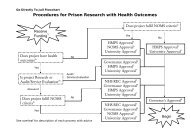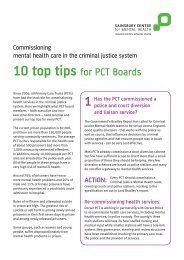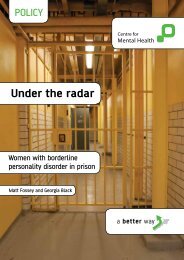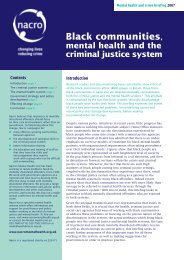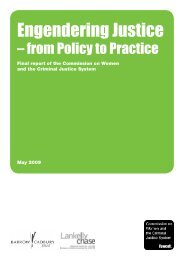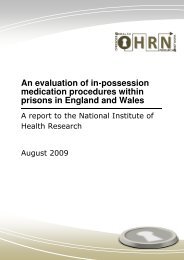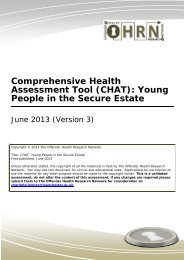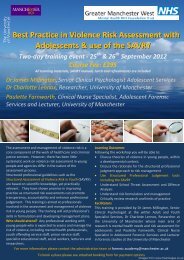Physical Control in Care Training Manual - Independent Advisory ...
Physical Control in Care Training Manual - Independent Advisory ...
Physical Control in Care Training Manual - Independent Advisory ...
You also want an ePaper? Increase the reach of your titles
YUMPU automatically turns print PDFs into web optimized ePapers that Google loves.
PHYSICAL CONTROL IN CARESTUDENTS TO PRACTICE ONE TO ONE.INSTRUCTOR’S NOTES:ENSURE STUDENTS PRACTICE ON SOMEONE OF SIMILARWEIGHT. CHECK FOR ANY INJURIES BEFORE PRACTICECOMMENCES.4.5.2 OPTION TWOIt may be possible for the member of staff avoid pull<strong>in</strong>g the youngperson away by us<strong>in</strong>g a push<strong>in</strong>g technique. This can only be used ifthere is sufficient space to the side and there is m<strong>in</strong>imal risk of <strong>in</strong>juryto the young person.The member of staff will approach <strong>in</strong> a protective stance from the sideof the young person, when <strong>in</strong> position the member of staff will pushthe young person off the other person, and then position themselvesbetween both parties to deter any further <strong>in</strong>cident and attempt tobeg<strong>in</strong> to de-escalate the situation.STUDENTS TO PRACTICE ONE TO ONE.4.5.3 FIGHT ON THE FLOOR.TWO MEMBERS OF STAFFIf two members of staff are available to separate either two youngpeople or a young person with a member of staff p<strong>in</strong>ned to the floor,then the follow<strong>in</strong>g technique can be used:When practic<strong>in</strong>g this technique staff must use correct lift<strong>in</strong>gskills.Instructors must check for <strong>in</strong>juries prior to practice.Ensure staff practice on students of a similar size and weight.© National Offender Management Service National Tactical Response GroupJuly 201096



